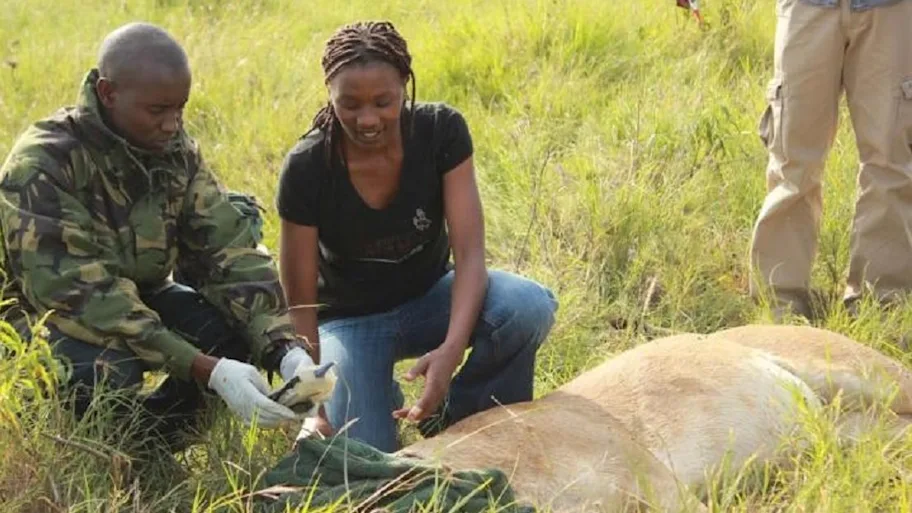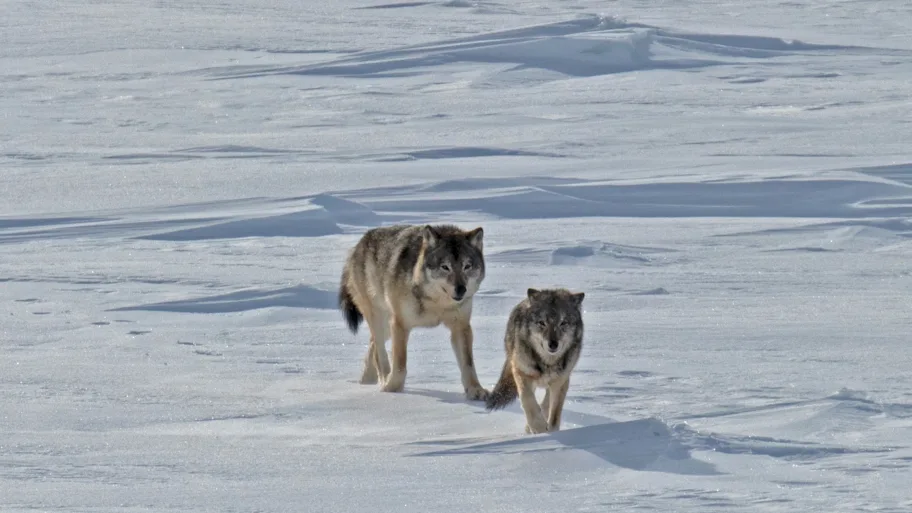
- Science News
- Featured news
- Lion conservation research can be bolstered by input from a wide-range of professionals
Lion conservation research can be bolstered by input from a wide-range of professionals

To tackle the sharp decline in lion numbers, conservation research should consider wild prey, livestock and the environment, not just human-lion interaction — and go beyond the fields of biology, wildlife conservation and environmental science to include ecology, economics, sociology and the humanities: Frontiers in Ecology and Evolution
To tackle the sharp decline in lion numbers, conservation research should consider wild prey, livestock and the environment, not just human-lion interaction — and go beyond the fields of biology, wildlife conservation and environmental science to include ecology, economics, sociology and the humanities.
— By Tania Fitzgeorge-Balfour, Frontiers science writer
The conservation of lions, while maintaining the well-being of people that live around them, is a complex problem that should be addressed by a wide-range of professionals working together, suggests a new review published in Frontiers in Ecology and Evolution. Rather than focusing solely on human-lion interaction, factors such as the environment, wild prey and domesticated livestock should be considered to get a full evaluation of the problem. This approach can generate effective policies to address the dramatic decrease in lion populations seen in recent years.
“We reviewed lion conservation research and found that most of this work was completed by experts from three highly-related disciplines: biology, wildlife conservation and environmental science, ” says Professor Robert A. Montgomery, lead-author of this study, based at the Michigan State University, USA and affiliated with Oxford University, UK.
“Human-lion conflict is a multi-dimensional issue involving not only people and lions, but also livestock, wild prey, and the environment. Thereby, we recommend that researchers studying human-lion conflict work together with colleagues from ecology, conservation, economics, sociology, and the humanities, among others, to fully evaluate this issue to develop sustainable solutions.”
“Since the lamentable death of Cecil, a lion we were studying, lion biologists have been energized to make quantum leaps towards a comprehensive conservation plan that benefits lions and the people that live alongside them. The need is really urgent, so the time for action is now,” adds Professor David Macdonald, co-author of the study and Director of Oxford University’s Wildlife Conservation Research Unit.
Related: House sparrow decline linked to air pollution and poor diet
Once common across all of Africa and parts of Europe and Asia, lion populations have declined sharply in recent decades, inhabiting just 8% of their historic range. This decline can be attributed to several factors including habitat loss, climate change, disease, hunting and human conflict.
“We recognize that conservation of lions and the well-being of people that share landscapes with them is a very complex problem, which will be best assessed via interdisciplinary research teams — teams of professionals with a wide-range of expertise,” explains Montgomery. “Thus, we decided to examine the extent to which human-lion conflict research has been interdisciplinary to date.”
Montgomery and his co-authors — international experts in conservation, wildlife ecology, environmental science, sociology and ethics — rigorously examined human-lion conflict research from between 1990 and 2015. They found a rapid increase in human-lion conflict research over this period, with most scientists having a biological, wildlife management or environmental science background.
“The lack of interdisciplinarity could not be blamed on researchers failing to reach out to experts in human behavior, environmental science, or policy-making. In many cases, lion biologists were making these inquiries but receiving declined invitations for collaboration,” says Montgomery. “However, the lion research community has recently made great strides to become more interdisciplinary.”
The analysis also revealed that most research focused on the human and lion dimensions of the human-lion conflict problem, where in fact there are other factors to consider. The environment (weather, seasonality and land cover), as well as the distribution, abundance and behavior of wild prey and domesticated livestock will also influence the extent of human-lion conflict.
Montgomery concludes with some recommendations for future research.
“The wild prey of lions deserves more study, as their ecology, movement and depletion are particularly relevant to human-lion conflict. We show there is space for the evolution of a new pride of lion researchers, bringing together a wide-range of expertise to examine the different dimensions of human-lion conflict. Genuine interdisciplinary research, driven by experts in anthropology, sociology, law and public policy, is more likely to address the missing link between research and policy enactment.”
The research is part of a special article collection on lion researchers.
Original article: Examining Evident Interdisciplinarity Among Prides of Lion Researchers
REPUBLISHING GUIDELINES: Open access and sharing research is part of Frontiers’ mission. Unless otherwise noted, you can republish articles posted in the Frontiers news blog — as long as you include a link back to the original research. Selling the articles is not allowed.






